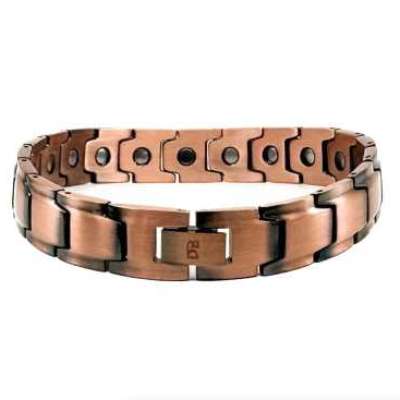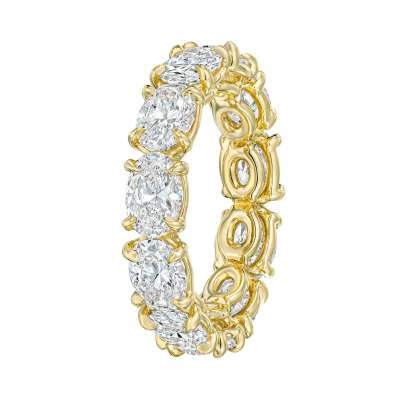
Pure Copper Magnetic Bracelets: History, Benefits, and the Science Behind Them
منتشر شده توسط Taekwondo Fighters
- وضعیتدر انبار
- تایپ کنیدجدید
Introduction
Pure copper magnetic bracelets have become increasingly popular in recent years due to claims that they offer numerous health benefits. These bracelets are often touted for their ability to relieve pain, reduce inflammation, and even improve overall well-being. The appeal lies in the combination of copper’s purported healing properties and the magnetic field generated by the magnets embedded within the bracelet. However, the scientific basis for these claims is still a topic of much debate. In this comprehensive article, we’ll delve into the history, benefits, scientific research, and controversies surrounding pure copper magnetic bracelets.
Chapter 1: The History of Copper in Healing
1.1 Copper in Ancient Cultures
Copper has been used for thousands of years for its medicinal and therapeutic properties. The ancient Egyptians were among the first to recognize the healing potential of copper, using it to sterilize wounds and treat various ailments. Copper compounds were used in the creation of ointments and solutions applied to wounds, and the metal was believed to purify and heal.
In ancient Greece and Rome, copper was also prized for its ability to treat infections and inflammation. Hippocrates, the "father of medicine," prescribed copper-based treatments for a variety of conditions. These early civilizations believed that copper possessed antimicrobial properties, which allowed it to fight off diseases and aid in the body’s natural healing process.
1.2 Copper in Traditional Medicine
Across the world, copper has been a staple in traditional medicinal practices. In Ayurvedic medicine, for example, copper is believed to balance the body’s doshas (life forces) and improve digestion, skin health, and cognitive function. Ayurvedic practitioners often recommend drinking water stored in copper vessels to harness its health benefits.
Similarly, copper is found in traditional Chinese medicine, where it is believed to support the flow of “Qi” (energy) and promote overall well-being. Copper was often worn as jewelry or carried in amulets to ward off diseases and improve vitality.
1.3 The Emergence of Copper Bracelets
The use of copper bracelets for therapeutic purposes gained popularity in the 20th century. In the 1970s, copper bracelets started being marketed as a natural remedy for arthritis, pain, and inflammation. This trend was spurred by anecdotal evidence suggesting that individuals who wore copper jewelry experienced relief from chronic pain and joint stiffness.
Chapter 2: The Science of Copper and Magnetism
2.1 The Role of Copper in the Human Body
Copper is an essential trace mineral that plays a crucial role in various physiological processes. It is vital for the formation of red blood cells, the absorption of iron, the regulation of enzymes, and the maintenance of nerve cells. Copper also has antioxidant properties, helping to neutralize free radicals that can damage cells and contribute to aging and disease.
Although copper is essential for good health, the body requires only small amounts of it. Dietary sources of copper include nuts, seeds, shellfish, whole grains, and leafy green vegetables. Copper deficiency is rare, but when it occurs, it can lead to anemia, immune system dysfunction, and cardiovascular problems.
2.2 Magnetism and the Human Body
Magnets have been used for centuries in alternative medicine to treat a variety of conditions, including pain, inflammation, and sleep disorders. Proponents of magnetic therapy claim that the magnetic fields generated by magnets can influence the body’s energy flow, stimulate circulation, and promote healing.
Magnetism is based on the principle that certain types of materials, including metals like iron and copper, can produce magnetic fields when exposed to electricity. When magnets are placed near the body, they are believed to create electromagnetic fields that interact with the body’s own natural electrical currents.
Magnetic therapy is often applied in the form of bracelets, pads, or inserts that are worn or placed near affected areas. The magnets in these products are typically small and generate weak magnetic fields.
Chapter 3: How Copper Magnetic Bracelets Are Supposed to Work
3.1 The Claims of Copper Bracelets
The manufacturers of copper magnetic bracelets claim that wearing these bracelets can offer a wide range of health benefits. The most common claims include:
Pain Relief: Copper and magnetic therapy are said to reduce pain, especially in individuals suffering from arthritis or joint-related conditions.
Anti-Inflammatory Effects: The combination of copper and magnets is believed to reduce inflammation in the joints and muscles.
Improved Circulation: Magnets are thought to stimulate blood flow, which can enhance the delivery of oxygen and nutrients to tissues, promoting healing.
Increased Energy: Proponents claim that magnetic fields can balance the body’s energy levels, leading to improved vitality and reduced fatigue.
Detoxification: Some advocates suggest that copper helps detoxify the body by neutralizing harmful substances and supporting the liver and kidneys in filtering toxins.
3.2 The Mechanism of Action
According to supporters of copper magnetic bracelets, the combined effects of copper and magnets create a therapeutic synergy. Copper is absorbed through the skin and enters the bloodstream, where it supports various physiological processes. Magnets, on the other hand, are believed to generate electromagnetic fields that influence the flow of ions in the body, promoting pain relief and healing.
The theory behind magnetic therapy is that it improves circulation by attracting and repelling charged particles in the blood, which enhances oxygenation and nutrient delivery to tissues. Some proponents also suggest that magnets help realign the body’s magnetic field, correcting imbalances that may contribute to illness or pain.
MORE INFORMATION CLICK NOW== https://sites.google.com/view/yogesh56/home

























